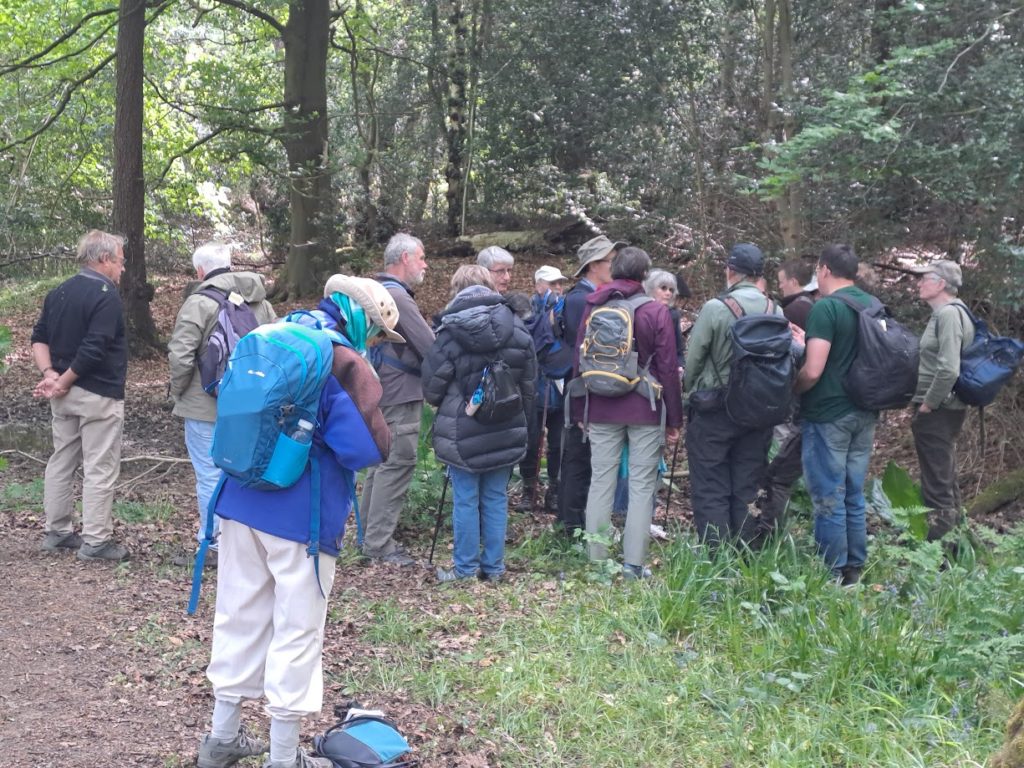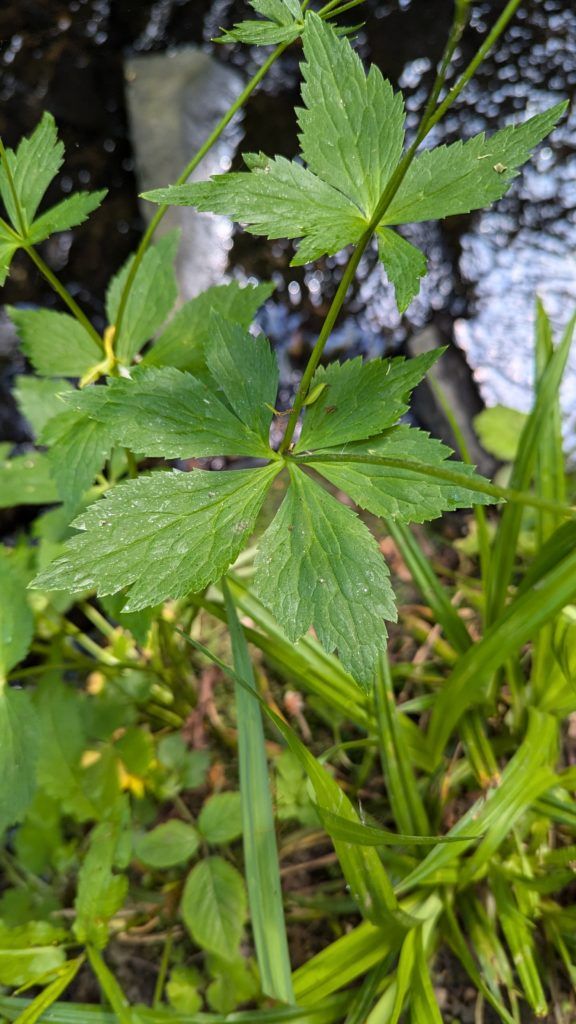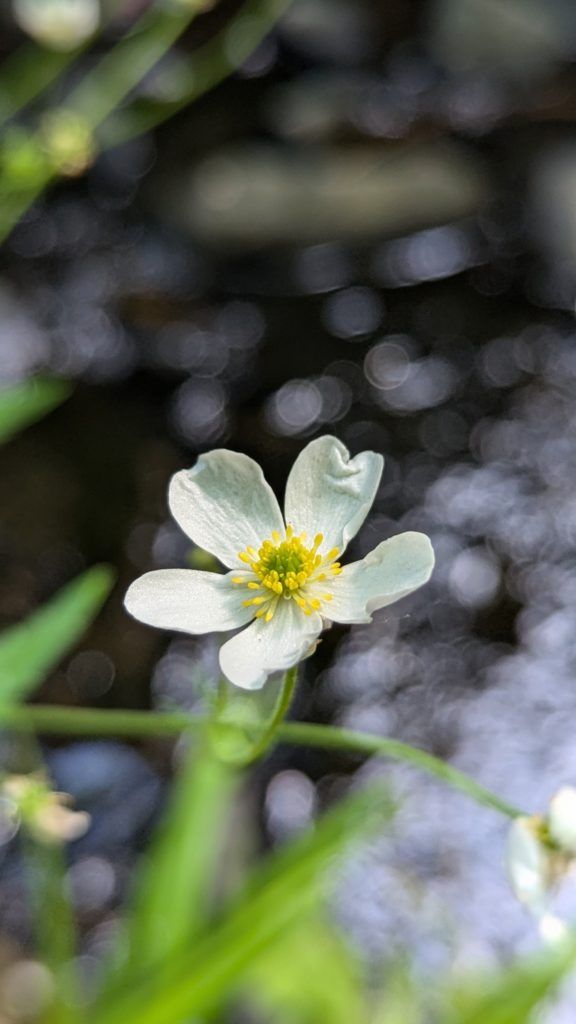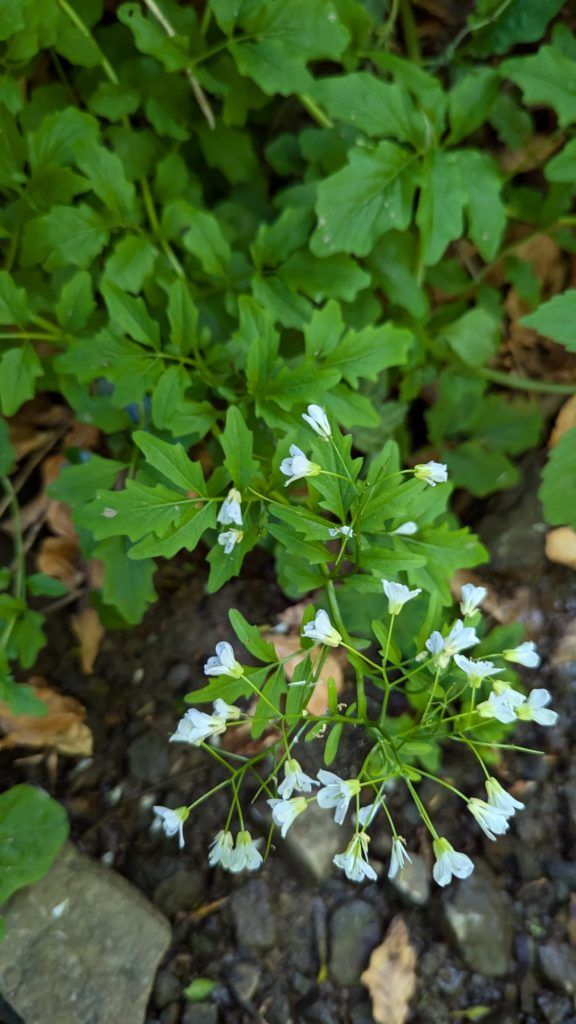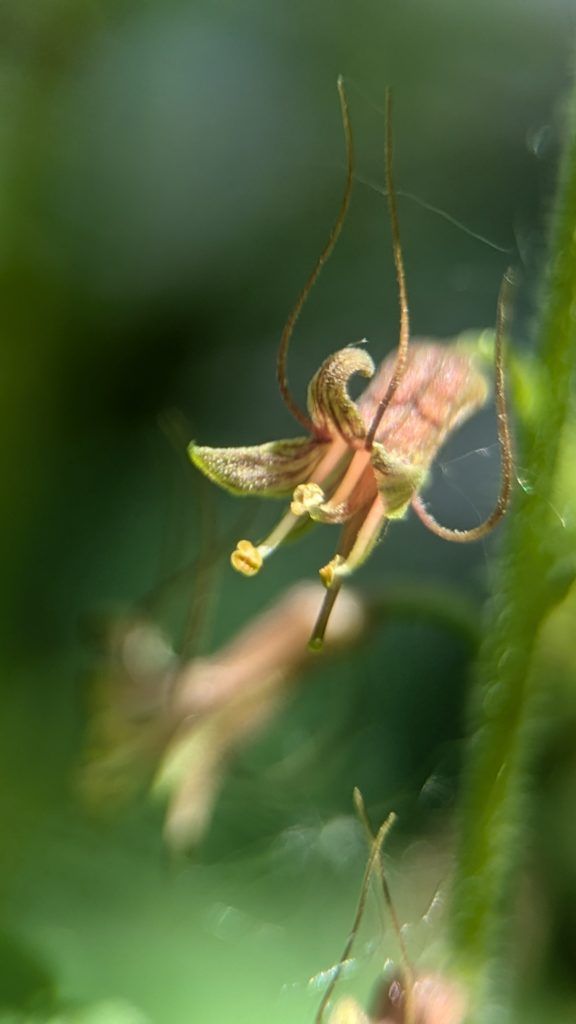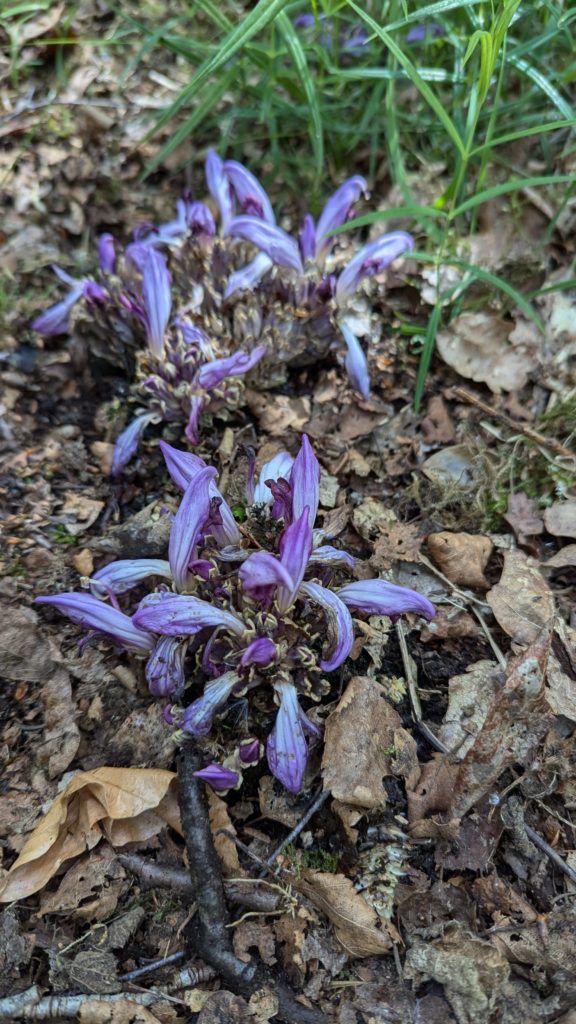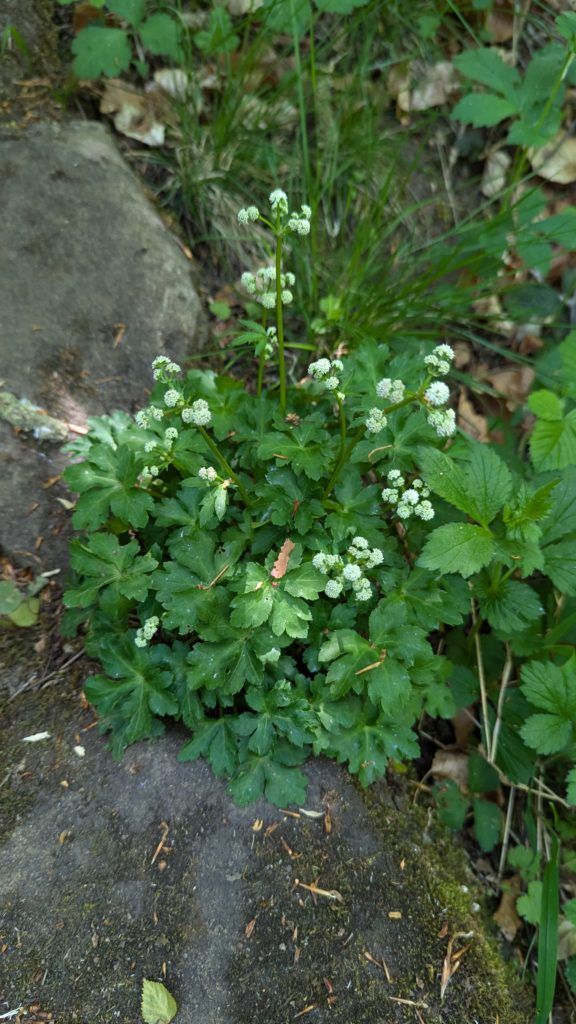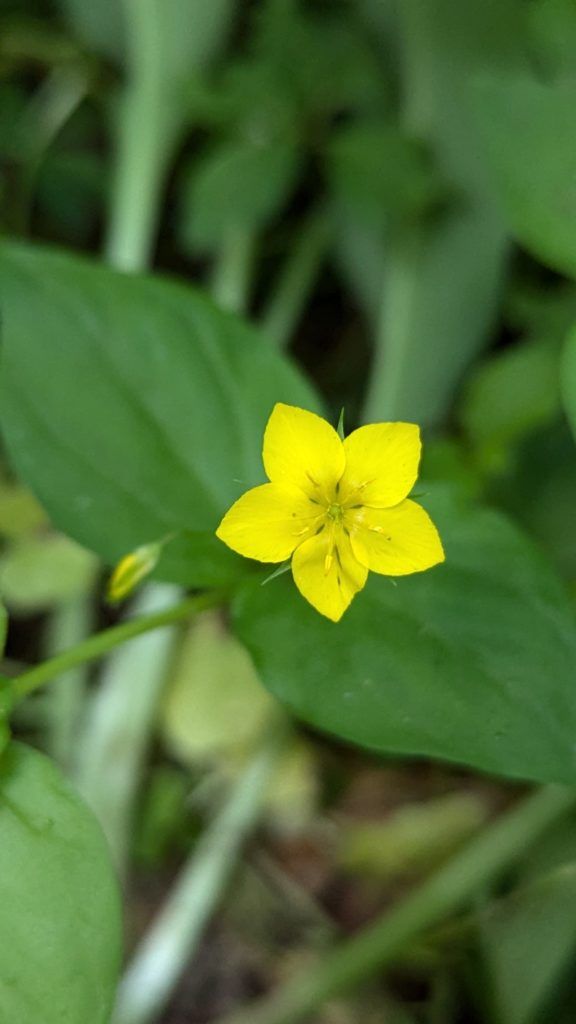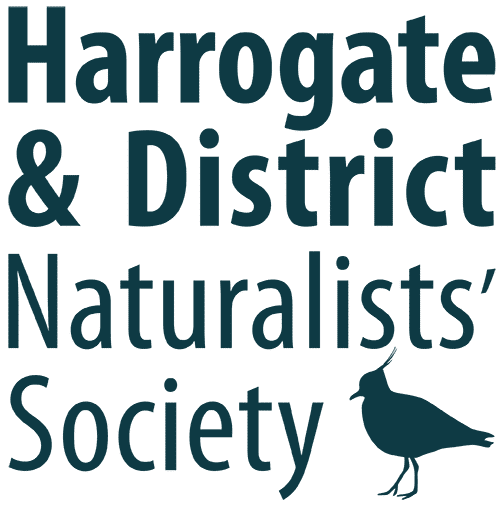This was a joint meeting of HDNS and The Wharfedale Naturalists Society and around half of the twenty or so participants came from each organisation. We were attracted by the reputations both of the Oak Beck area for unusual alien plants and of our leader for the day, Kevin Walker, HDNS’s Botany Recorder and the BSBI’s Head of Science.
Kevin explained that most of the alien species have spread from Harlow Carr Gardens over the years, following the stream that runs through the Gardens down to Oak Beck. We followed the re-routed footpath from Crag Lane down to the stream and soon started to see some of the species which would become familiar. Perhaps the most successful is Coralroot (Cardamine bulbifera) regarded as a native species in parts of South East England but an introduction here. It reproduces vegetatively from bulbils in the leaf axils and has spread right along Oak Beck to form large patches in the Nidd Gorge. The bulbils can be moved by water but plants higher up suggest that it has other methods of getting established. Aconite-leaved Buttercup (Ranunculus aconitifolius) is a white-flowered species from the Alps growing to around waist height as more tidy single plants by the water’s edge.
We made our way down towards Oak Beck a little upstream from the Harlow Carr inflow so in an area less accessible to the alien incursion and showing the interest of the native flora. In a flattish area there were several clumps of Smooth-stalked Sedge (Carex laevigata), a rather neat-looking species with widely spread upward pointing female spikes. Towards the junction of the streams we started to encounter American Skunk-cabbage (Lysichiton americanus) with the yellow spathes now gone and showing huge green leaves wrapped around the flowering spikes. A second introduced Cardamine species was the pink-flowered Greater Cuckooflower (C. raphanifolia).
Kevin regards Wood Stitchwort (Stellaria nemorum) as an indicator of good habitat. It was growing here with the more familiar Greater Stitchwort (S. holostea) and we could distinguish the former’s more deeply divided petals, wider leaves and upright habit. Great Wood-rush (Luzula sylvatica) leaves are apparently popular with Golden Eagles as a nest lining but they appear not to have found the abundant source in these woods. Emerging from the ground were the flowers of the parasitic species Purple Toothwort (Lathraea clandestina), native to the Low Countries but widely introduced elsewhere.
The exceptionally dry spring meant that crossing to the north side of Oak Beck was very straightforward. We had been seeing Fringecups (Tellima grandiflora) all day but here it and its fellow member of the Saxifrage family Pick-a-back-plant (Tolmiea menziesii) were growing together as they do at home in Oregon. Their flowers differ in that Tolmiea’s only have one line of symmetry. Marsh Hawk’s-beard (Crepis paludosa) is a native species more common higher up into the Dales. Its yellow flowers were not yet visible unlike those of Leopard’s-bane (Doronicum pardalianches). By the water’s edge there was a patch of leaves of Caucasian Pennycress (Pachyphragma macrophyllum) with spikes showing both its white flowers and flattened roundish fruits.
While the rest of us ate our lunch near the footbridge Kevin investigated what he could show us afterwards. Greater Tussock-sedge (Carex paniculata) seems to have disappeared here but we were able to compare Opposite-leaved and the much rarer Alternate-leaved Golden-saxifrages (Chrysosplenium oppositifolium and alternifolium). From here we zigzagged up the hillside to Birk Crag detecting the change to species of drier areas such as the more delicate Hairy Wood-rush (Luzula pilosa) and Climbing Corydalis (Ceratocapnos claviculata) with Heather (Calluna vulgaris) and Gorse (Ulex europaeus) on top of the crag. Before the group broke up Kevin was heartily thanked for his insights into an area fascinating for both its alien and native species.
Robin Blades
